Greetings to our guide on kitchen layout concepts, designed to assist you in creating a practical kitchen. The regulations imposed by building codes often hinder creativity and seem illogical. But isn’t that a common observation?
Related: Dimensions of Standard Wood Pallets | PVC Pipe Dimensions | Cinder Block Dimensions | Standard Garage Dimensions
Actually, that’s not the case. Building codes establish safety best practices and follow a logical approach. For instance, stair balusters must be placed close enough together to prevent a four-inch ball from passing through. Does this number appear arbitrary to you?
In reality, the four-inch requirement is based on the fact that an average infant’s head cannot fit through such a narrow space. Avoiding the need to grease your child’s ears to extract them from the banister is indeed beneficial. These practical solutions to everyday problems are incorporated into kitchen codes and designs, as no other room demands as many design considerations as a kitchen.
Not everyone possesses a spacious kitchen. Many kitchens are cramped with gas lines, vent hoods, water supply lines, 220V electrical service, and sewer pipes, all squeezed into as little as 200 square feet. This can be hazardous, which is precisely why a significant portion of building codes focuses on kitchens.
The International Code Council determines building codes, which are then adopted by local lawmakers. Consequently, your kitchen must adhere to the code, whether you’re constructing a new one or renovating an existing space. A legitimate and legal project involves obtaining the necessary permits and having an inspector evaluate the completed work for compliance with the code.
While building codes are absolute, the same cannot be said for best design practices. These practices are simply ideas that have been developed by kitchen design professionals over the years and are widely accepted as the most effective. Occasionally, they may align with building codes, but more often, they are rooted in common sense.
The concept of the “kitchen triangle,” discussed later in this article, is a design practice derived from efficiency. No permits have ever been revoked because a kitchen didn’t conform to this model. It is merely a helpful way to plan your kitchen. Once you’ve read this article and grasped the basics of kitchen layout, you can explore our list of top kitchen design software options (both free and paid).
A. Diagrams of 8 Kitchen Layouts
The good news is that there are eight primary kitchen layouts to choose from. In fact, you can arrange your kitchen in more configurations than that, but these eight layouts are the most common ones. Allow us to present them below.
The challenging part is selecting one layout, which is not always easy. Personally, my favorite kitchen layout is a single-wall design with a long island. I used to reside in a fantastic open-concept house that featured this layout, and it was perfect for both entertaining guests and daily activities.
1. Single-wall kitchen layout without an island
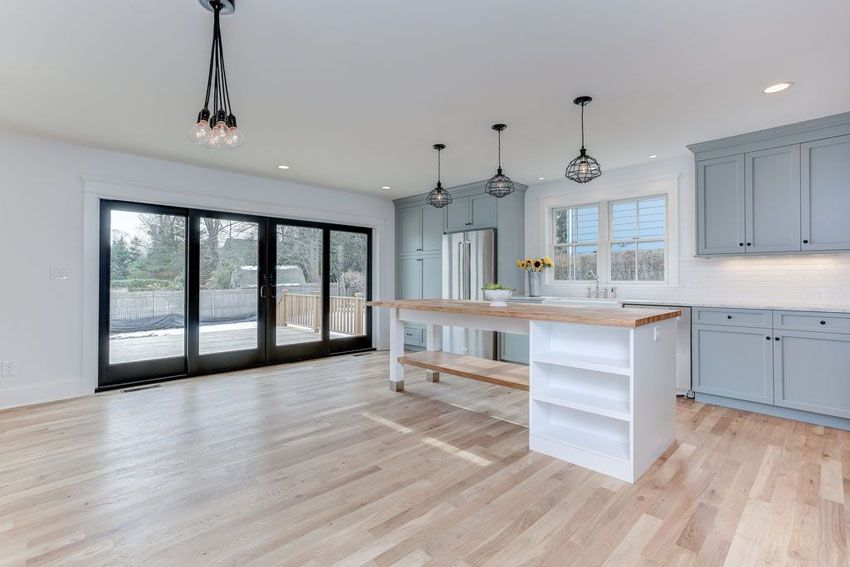
2. Single-wall kitchen layout with an island
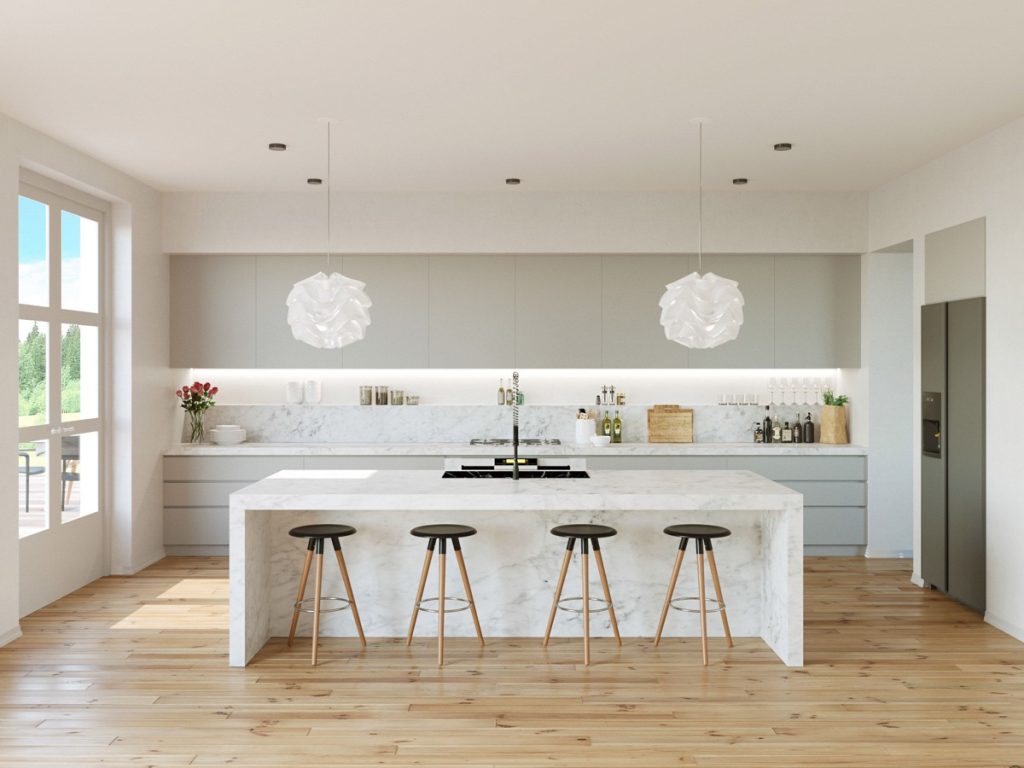
3. Galley/corridor/parallel kitchen layout without an island

4. Galley kitchen layout with an island

5. L-shaped kitchen layout without an island
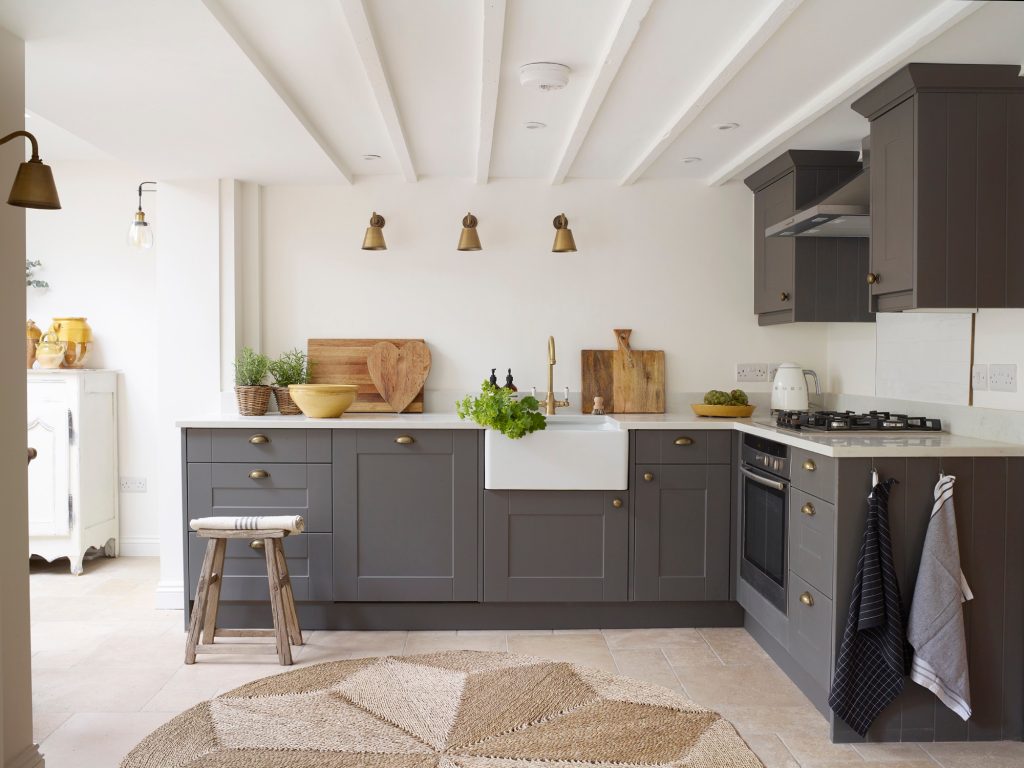
6. L-shaped kitchen layout with an island
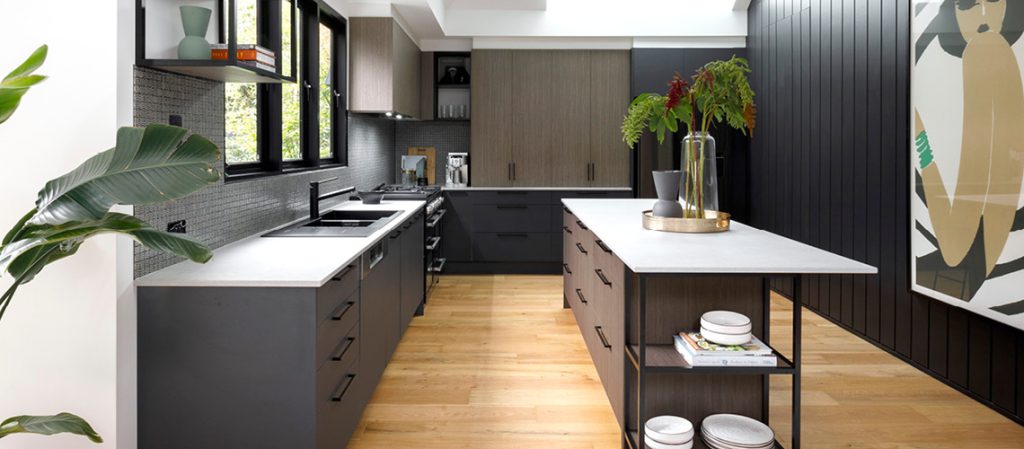
7. U-shaped kitchen layout without an island
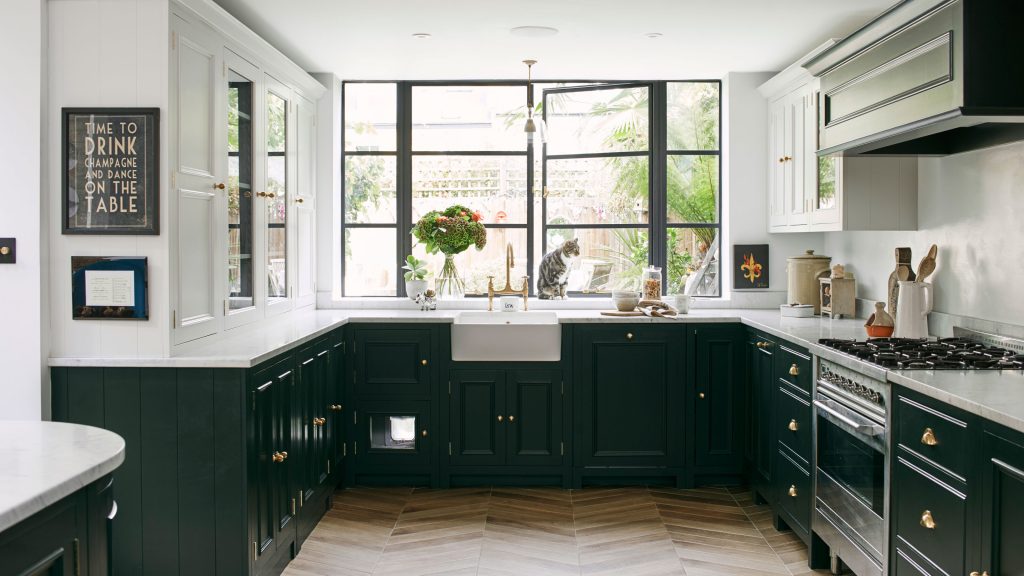
8. U-shaped kitchen layout with an island

9. G-shaped
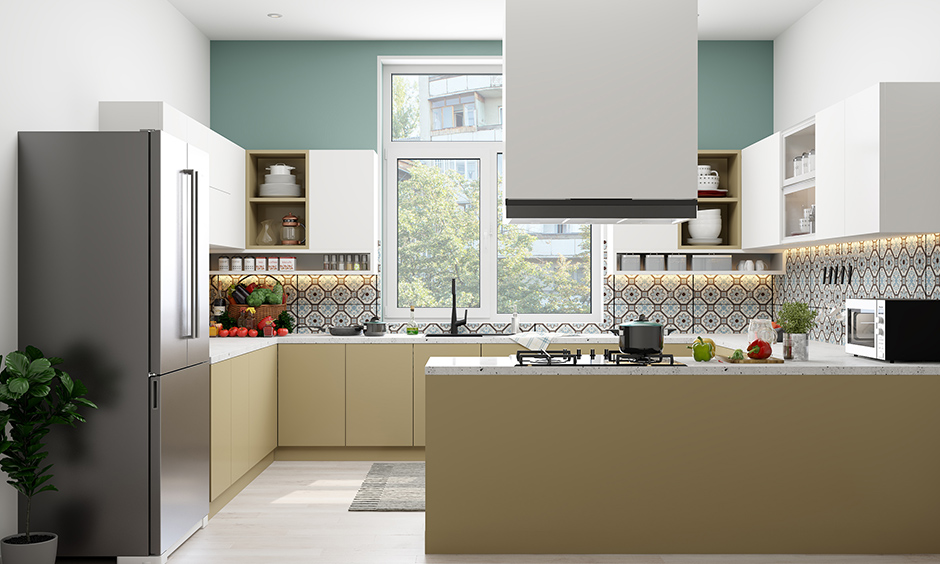
10. Kitchen with 2 islands
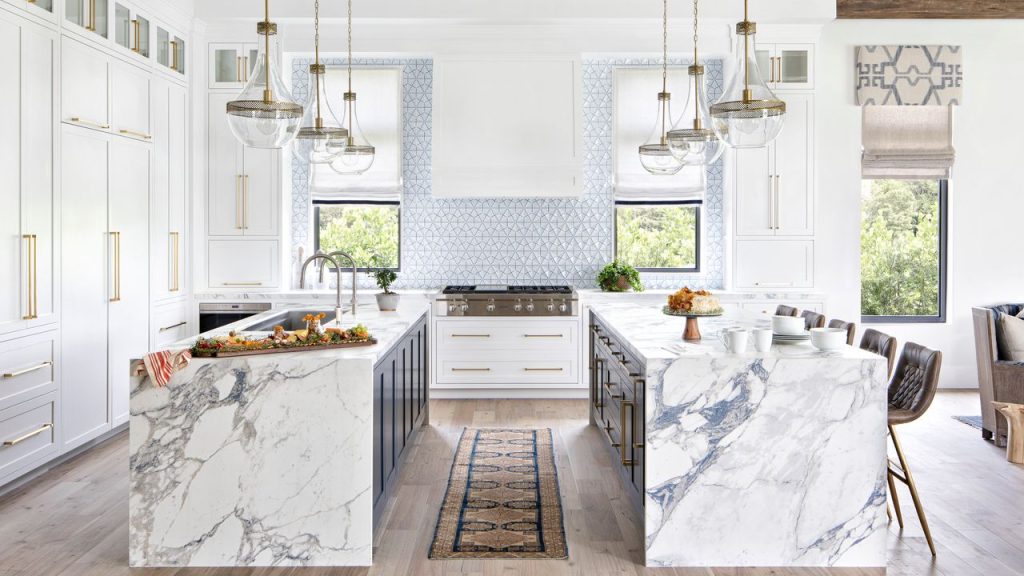
Custom layout: Some kitchens deviate from typical layouts and come up with unique arrangements.
B. Illustrations of Kitchen Dimensions
1. Planning Kitchen Doorways
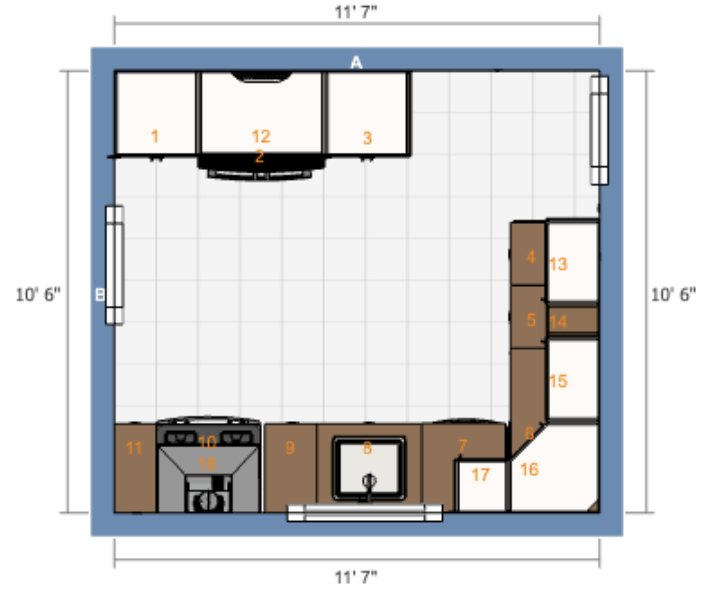
Open floor plans became trendy around seventy-five years ago and continue to be popular today. As interior walls were removed, the kitchen, dining room, and even the living room became distinct parts of one large space. This change allowed people in the kitchen to interact with those in the dining room and living room, fostering a more social atmosphere.
Of course, many kitchens still have doors, or at the very least, an entrance. Building codes stipulate that entrances must have a minimum width of 32 inches, and if there are doors, they should not obstruct appliances. Similarly, opening the stove or refrigerator door should not interfere with the entrance or a door.
2. The Kitchen Triangle Layout for Smooth Workflow

The stove and oven, sink, and refrigerator are the three most important stations in a kitchen. As shown above, they form a triangle. An efficient kitchen ensures that these three sides are not too far apart.
A cook moving between these stations with hot food should not have to travel long distances or navigate multiple corners. In the kitchen depicted above, a hurried cook may end up with the corner of the island bumping into their hip, which can be quite painful.
3. Creating an Efficient Kitchen Layout
Guidelines for an Efficient Kitchen Include:
- The combined length of the triangle’s sides should not exceed 26 feet.
- Each side of the triangle should measure between four and nine feet, aiming for an equilateral triangle shape.
- Try to keep paths between the triangle’s points clear of large obstacles. Small impediments are acceptable, but if they divert your path by more than a foot, they become too obstructive.
- Any other work areas, such as microwaves or small appliances, should adhere to the same distance requirements as the triangle’s sides. They should be no less than four feet away from the closest point and no more than nine feet away.
Managing Traffic in the Kitchen for Efficient Workflow
When homeowners remodel their kitchens, many express the desire for additional countertop space. While building codes may not have strict regulations regarding counters, the principles of good design offer specific guidelines for creating a functional kitchen. A satisfied homeowner should consider and follow these countertop design principles:
- The recommended minimum linear countertop space is just over 13 feet, although small galley or L-shaped kitchens may not be able to achieve this measurement.
- Opt for rounded or clipped edges instead of sharp 90-degree angles. This choice is typically easier since most manufacturers no longer produce countertops with 90-degree edges.
- Avoiding hip and waist-level injuries is not the only reason to opt for rounded edges. Square corners can also lead to countertop cracking.
4. Kitchen Countertop Dimensions

The recommended depth of a countertop should be between 24 and 25 inches, measuring from the counter’s edge to the wall or backsplash. Most counters adhere to this standard specification, so unless you plan on custom countertops, it’s challenging to go wrong.
Given the presence of various large countertop appliances like blenders, microwaves, toaster ovens, and standing mixers, it’s crucial to provide ample vertical space between the countertops and the undersides of wall cabinets. The recommended minimum distance is 15 inches. Now
let’s discuss sinks. Building codes and design practices don’t specifically address sinks.
As long as it’s practical, you can choose from single, double, or triple-basin sinks based on your needs. Sink manufacturers have strict regulations concerning drainage slope, fixture hole placement, and material composition, so you don’t have to worry too much about the sink itself.
Design practices mainly focus on the areas surrounding the sink. When placing a sink, it’s advisable to position it next to or across from the stove and/or refrigerator, following the kitchen triangle concept.
The sink should have “landing areas” on both sides where you can place food items or cookware. These landing areas should be a minimum of 24 inches on one side and 18 inches on the other. Additionally, it’s recommended to have another uninterrupted 36 inches of space directly next to the sink.
5. Overhead Distances and Dimensions

Keep in mind that countertop spacing becomes crucial when determining the placement of stoves and ovens. Gas, electricity, flames, heat, and even noxious fumes are involved, making safety the top priority. One common issue with stoves is finding adequate space for placing hot pots and pans.
At the very least, there should be 12 inches of landing space on one side and 15 inches on the other. However, this minimal space is often insufficient, especially for larger pans or baking racks, so it is advisable to have greater widths. Ovens are typically located beneath stoves as a single appliance, but if they are separate, each side of the oven should have 15 inches of landing space.
Ovens require a minimum of 15 inches of adjacent landing area on both sides. However, since most ovens are positioned under stoves as part of a single unit, this landing area is usually covered by the requirements for the stove. Above the stove, there should be a total of 24 inches of space between the stovetop and any nonflammable surface.
While vent hoods may not be mandatory, they are highly recommended. If there is a combustible surface, such as a cabinet, above the stove, an additional six inches of space should be provided between the underside of the cabinet and the stovetop, making it a total of 30 inches. A minimum of 24 inches of vertical space is required between the stove and any combustible material.
These guidelines help ensure safety and efficiency in the kitchen, allowing for smooth workflow and comfortable usage of appliances and work areas.
